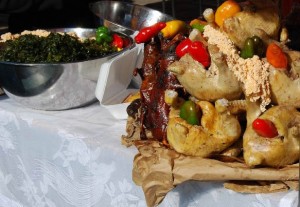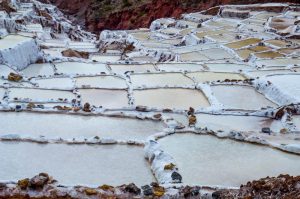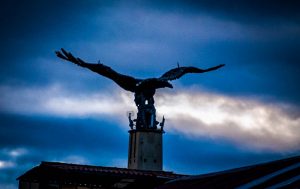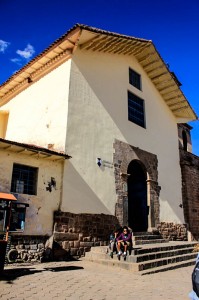Lightning Shakes the Earth and Makes Food in Cuzco

Lightning crackles across the Andean sky in great bursts. Sometimes it crashes into the ground and shakes all around. If you want drama, it will be there anytime lightning comes, or even just when the tumble of thunder rolls the horizon or breaks brutally, leaving your ears ringing.
In the City of Cuzco lightning is important, not just because of the climate, but also for religious reasons. It is, perhaps, the sky’s equivalent of hot peppers, that burst of sting that makes food good. In dishes such as Cuzco’s traditional chiriuchu, the main festive food, red and yellow ají (rocoto hot peppers) are carefully placed in strips, like those of lightning in the sky or around the tops of mountains.

Lightning was called Illapa, a strange word at whose root is the word illa, or burst of light, shine, glow, luminescence.
In fact this word could be related to numinous, or the sacred. It is that which transforms, not unlike how the presence of hot pepper transforms ingredients into an uchu, or hot dish. Sure heat is involved in the cooking, but the name uchu means hot pepper giving it the power of the transformation.
In Aymara, according to the classic dictionary of Ludovico Bertonio, illa meant something stored, or treasured, for the provisioning of your home, such as food and clothing, or gold and silver.


Interestingly, one of the Ayar brothers, the mythical founders of the Inca nation according to many chroniclers, returned underground when his brothers walled off the opening into which he entered. Named Ayar Cachi (cachi means salt in Quechua), people today say his tears come from the earth as a salty water that evaporates into the famous maras salt of the Cuzco region.
The next brother, Ayar Uchu, whose name means hot pepper as you can tell, flew up into the heavens as a condor and then turned into stone on a mountain top where he had a temple and was worshiped. This association with movement from mountain top to sky relates him, and hence hot peppers, to lightning.

According to the chroniclers, Cuzco held several temples specifically to lightning and thunder, such as the one where the Church of San Blas is today. That neighborhood of artisans and bohemian life took San Blas as its patron, a replacement for Illapa.
San Blas is Saint Blaise in English. He was one of the most important saints of the late middle ages, shortly before the Spanish came to Peru. He was known as the saint of wild things and of healing. His imagery consists of crossed candles, burning strips of light, as well as a cave with wild animals. This latter, particularly, relates to cacheing of goods in wombs or caves, such as the one the Ayar sisters and brothers came from. As a result San Blas ties nicely into the Ayar siblings myth and into the story of Pachacuteq the Inca whose body is still said to have been found in caves above San Blas.

The temple of San Blas was on a set of holy terraces which speaks again to the relationship between lightning and the provision of food.
Another common image for lightning is the snake found carved on many walls of Inca Cuzco, and today represented in the carvings and recreation of Inca beliefs and popular devotion engaged with tourism. The snake is part of the Andean trilogy which includes in addition to the snake, the condor and puma.
Lightning not only makes the sky shine with explosions, like those of the fireworks that burst open in feasts and snap on the ground as thunder, it is also deeply embedded in the life of contemporary Cuzco, in places like San Blas, in the Andean trilogy, and, most importantly, in the food people eat.




